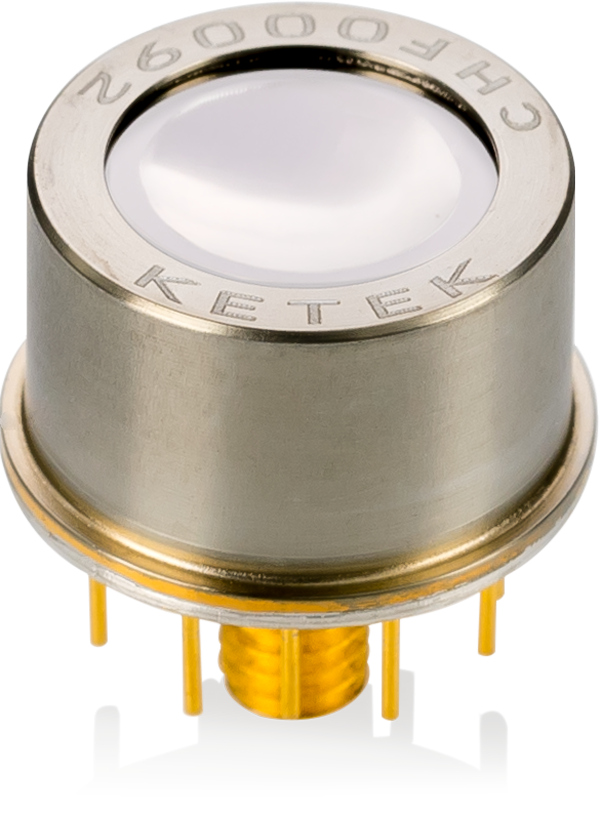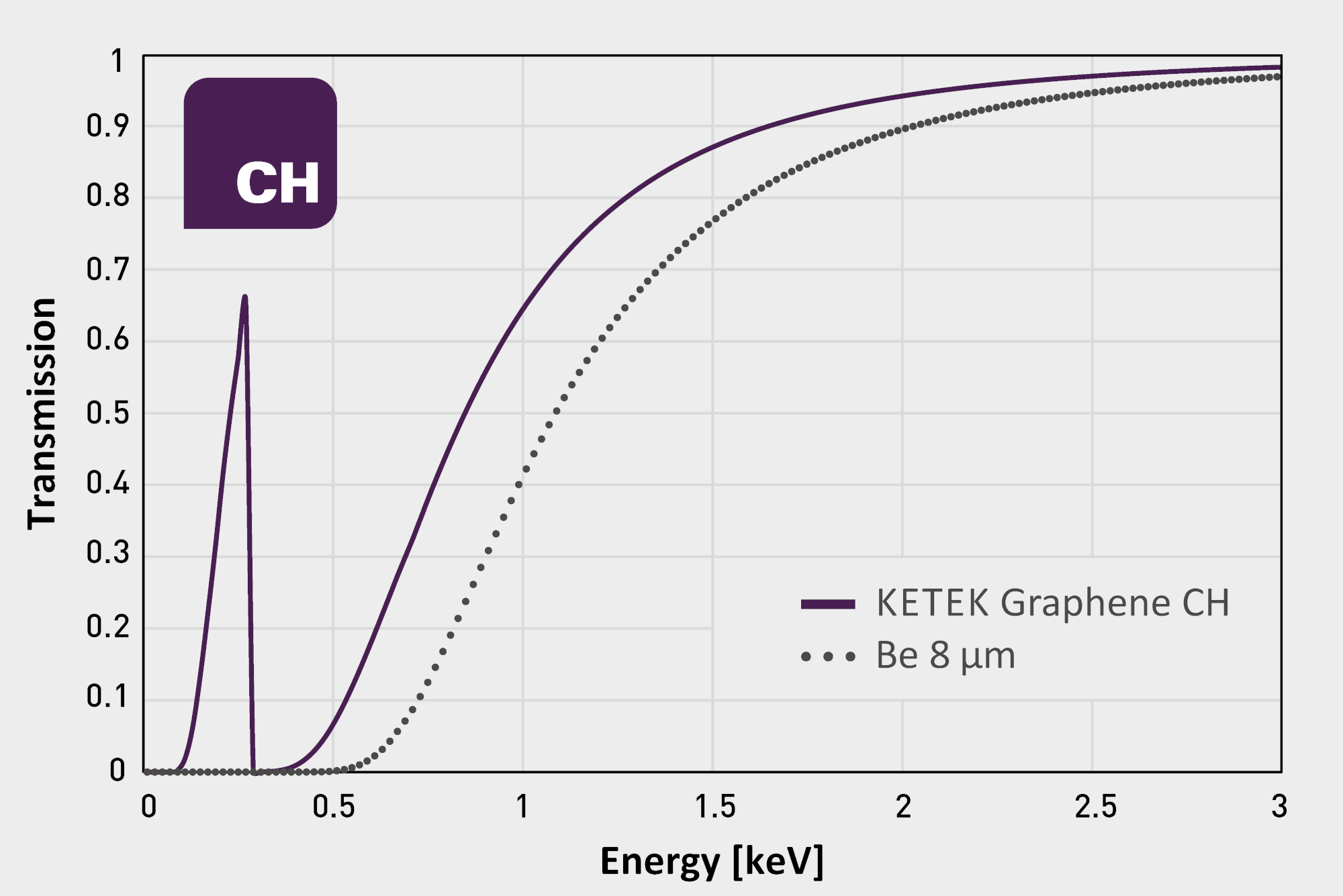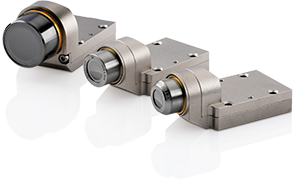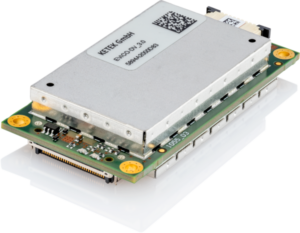Silicon Drift Detectors
KETEK’s Silicon Drift Detectors (SDD) are the state-of-the-art X-ray sensors for the energy range between 0.05 keV and 30 keV.
They are globally used in manifold applications in electron microscopes, XRF benchtop and XRF handheld spectrometers as well as in material sorting systems for mining and recycling. Due to their wide operating temperature range, their excellent energy resolution, and high reliability they are particularly suited for industrial applications.

VITUS H50 CH
65 mm² collimated to 47 mm² X-ray Silicon Drift Detector for XRF – EDX – TXRF Applications
Unique Features
- High performance module
- Largest area in ultra compact TO8 housing
- New KETEK CSA improves the energy resolution at all peaking times
- ∆T from 95 K to 130 K depending on heat sink temperature
- Power consumption as low as 250 mW possible at 20 °C heat sink and -35 °C chip temperature
- Superior radiation hardness up to a total dose of 5×1012 incoming low energy photons
- Both Graphene window types available
- Operation under vacuum and under helium atmosphere possible
Available in
Available Options
Specifications
| First amplification stage | KETEK CSA |
| Energy resolution (@ Mn Kα, -35 °C chip temperature and 1 µs peaking time) | ≤ 129 eV |
| Peak to background | > 15,000 |
| Peak to tail | > 2,000 |
| Optimal peaking time at max. cooling | 1 µs |
| Absorption depth | 450 µm Si |
| Peak shift stability up to 100 kcps | < 1 eV |
| Max. input countrate | 4,000 kcps |
| Window | 1 µm Carbon |
| Cooling performance at +20 °C heat sink temperature |
∆T > 95 K |
| On-chip collimator | multilayer |
Cooling Performance
Operation Requirements
SDD Voltages and Currents
| Ring1 (R1) | -20 V ± 10 V | 10 µA typ. |
| RingX (RX) | -130 V ± 30 V | 10 µA typ. |
| Back | -80 V ± 20 V | < 1 nA |
| Peltier Element | 5,5 V | 600 mA max. |
General Parameters
| Temperature Monitor | NTC thermistor | 10 kΩ @ 25 °C |
| Output signal | ramped reset type | – |
CSA Parameter
| VI/O | 3.3 V ± 0.1 V | < 1 mA |
| Vs | 2 V ± 0.1 V | < 1 mA |
| Vsss | -5 V ± 0.1 V | < 1 mA |
| Output gain | 1.6 mV/keV ± 20 % | – |
Overview VITUS SDD Series
KETEK offers a broad range of high performance Silicon Drift Detectors (SDD) for energy dispersive X-ray spectroscopy. From mature off-the-shelf systems to innovative customized solutions, KETEK provides the right X-ray sensor for your needs across the spectrum of scientific and industrial applications. The VITUS SDD series combined with KETEK’s complete electronics including the pulse processing is a fast and efficient acquisition solution of highest quality.




















